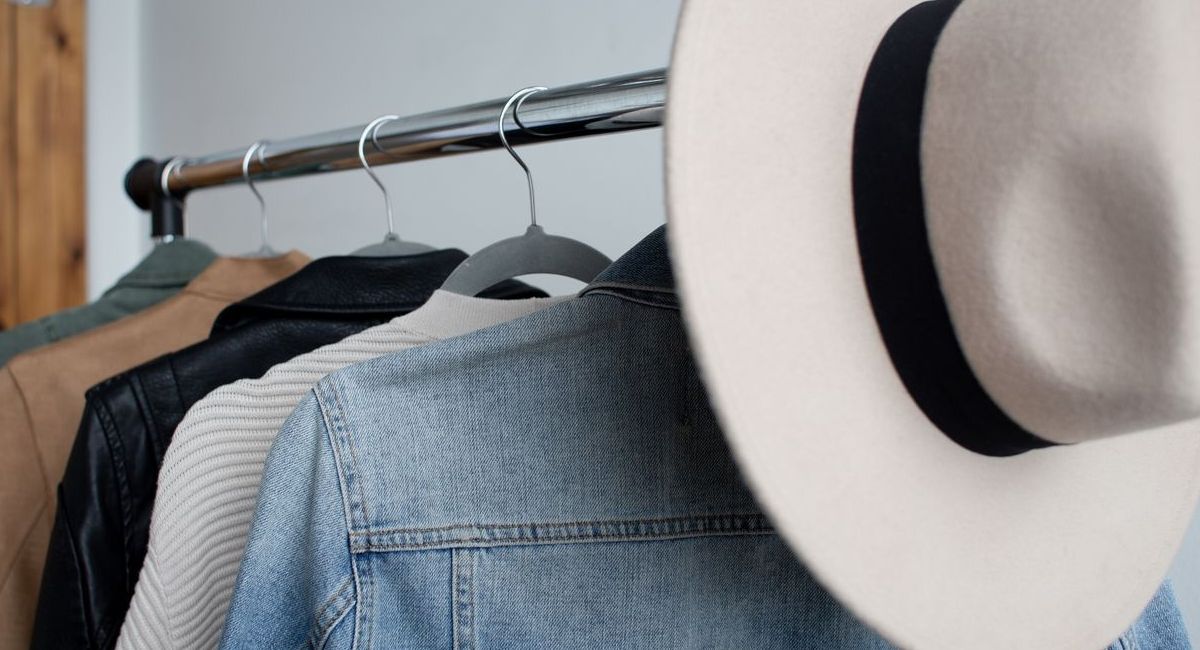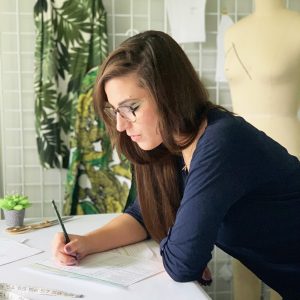
![]()
You Received Your First Sample. Now What?
You’ve just received your first sample prototype back from the factory. Now you can get started on reviewing your sample in order to create an amazing end product. There are three main elements that you will be evaluating to prepare comments for your next sample:
- Design: The overall creative design of your garment/accessory. How the sample aesthetically reflects your original design.
- Fit / Function: The fit and performance of the garment/accessory as intended.
- Construction: How the construction adds to the overall design and function of the garment/accessory.
To answer these questions, there are 4 simple steps you can follow to review your sample and prepare comments for your factory.
To review your sample you will need:
- Prototype Sample
- Tech Pack
- Hard Edge Ruler
- Tape Measure
- Pen / Pencil
- Highlighter
STEP 1: MEASURE YOUR GARMENT
Before fitting your garment, you will need to measure it against your specs. It’s important to measure your garment first before fitting it because fitting your garment can stretch the fabric. It’s best to evaluate the garment exactly as the factory delivered it to you.
Lay your garment flat on a large table and smooth out any wrinkles without stretching the garment. Use your hard edge ruler and tape measure to compare your POMs to the actual sample measurements, following your measurement guide. Repeat these same steps for the back of the garment.
After you’ve measured your prototype, highlight the specs that are above or below tolerance. Make a note of what fit issues you expect to see based on the measurements out of tolerance.
As a general rule of thumb, it’s a good idea to request that the factory check the specs before sending the prototype. In most instances, it can be helpful to have them send along a pattern as well. Having these additional resources allows you to compare your measurements to the factory’s so you can see areas where they may be following a different method.
If they measure it before sending and notice specs that are out of tolerance they can fix the garment before sending it to you, saving you time and money. You and your factory should both be following the same measurement process to ensure both parties are comparing the same POMs. This is usually achieved by having a master measurement guide that is shared with your factory. Having the pattern can help you determine if fit or measurement issues are due to the pattern or construction.
STEP 2: CHECK CONSTRUCTION
Flip to your Technical Sketch and Construction page in your Tech Pack. Start comparing your construction callouts from your Tech Pack to the sample.
Some helpful questions to answer are:
- What’s different from the Tech Pack?
- Do you like how the factory constructed the garment (even if it is different than what you intended)?
- Are there any things that you would change or improve?
Make note of any revisions you’d like to see and update your Technical Sketches to reflect those changes. Double check common problem areas like the pockets for holes, as well as buttons and snaps for security. Be sure to also look at the stitching closely.
STEP 3: FIT
Next, put the garment on a form which reflects your base size. Begin evaluating the fit by looking for drag lines and stress points. Ensure that the garment is laying correctly on the form before you begin making fit changes. If you need to check the movement or function of the garment you can fit it on a model who closely compares to your base size.
Some helpful questions to answer are:
- How could the fit be improved?
- Does the fit of the garment reflect your design intent?
After you’ve completed evaluating the fit, take photos to include with the comments that you will send back to the factory. It can be helpful to draw on the photos with arrows and text when referencing specific problem areas.
STEP 4: WRITE COMMENTS
It’s important to be organized and consistent when writing comments. In most cases, language and cultural barriers will play a factor in communication, so the clearer you can be, the better. If your points of measure are numbered, reference those numbers in the comments. If your factory has sent comments with the prototype, address them. Create a consistent format for your comments so that your factory knows where to look for information.
It’s a delicate balance being clear and being kind. Sometimes it may feel like your comments are too blunt but adding too much “fluff” in your writing will be confusing. Be clear and concise and use words like “please” and “thank you” where appropriate.
Take the notes you made while reviewing your sample and add them to your Tech Pack on your Prototype Review page. You may not need every section below, but always address the three main elements we talked about earlier: Design, Fit/Function, and Construction.
Here’s an easy format to follow for your comments:
HEADER
Prototype #, Date, Style #, Name of the Factory (especially if you are dual sourcing)
Ex:
“P1, 5/9/18, #OG208, Harvest”
INSTRUCTIONS
A small instructional blurb to let the factory know what any abbreviations or highlighted measures mean.
Ex:
“Measurements in red represent measurements out of tolerance and revised measures.
Cells highlighted in blue represent over ¼” difference between factory and [Company/Brand Name] measures.
BTS = Back to Spec”
DESIGN
Add any comments about design changes here.
Ex:
“Please add zipper garages at the top of the hand pockets. The sketch has been updated to reflect it.”
MEASUREMENT
Comment on any measurements that need to change or be brought back into tolerance referencing the POM code.
Ex:
“#002 CB Length is adopted as sampled.
#145 Back Neck Drop is out of tolerance. Bring back to spec.”
CONSTRUCTION
Add any comments about construction, such as stitch or seam changes or callouts.
Ex:
“Please correct the bottom CF zipper to be bartacked.
Clean the back yoke seam with binding.”
PATTERN
Add any comments about pattern updates here. If you are sending a pattern to the factory, be sure to include the tracking number in your comments.
Ex:
“Please correct the shape of the armhole. See P1 photos tab. A pattern has been sent with the correction, tracking #125849”
NEXT STEPS
Finally, finish up with a call to action statement. Is the prototype approved? Are you asking for another sample? Let the factory know.
Ex:
“Please send 2ndProto making all revisions above. Factory must submit pattern without seam allowance or ease and full garment measurements. Thank you.”
Once you’ve completed your comments you’re ready to send your Tech Pack back to the factory for next steps. Don’t forget to double check you’ve included photos, updated sketches, comments, and tracking numbers if you sent anything to the factory.
Creating a consistent sample review process with your factory can be daunting at first, but over time both you and your factory will get used to a standard format. Consistency will keep you sane and help you to develop a positive, lasting relationship with your factory.
Guest Post: Natalie Smith
![]()

I’m Natalie from Points of Measure! I’ve worked with hundreds of clients on thousands of projects providing custom technical and creative design services to startup fashion companies. With that experience it is my goal is to give you all the tools you need as a fashion company or freelancer to take the Industry by storm.
